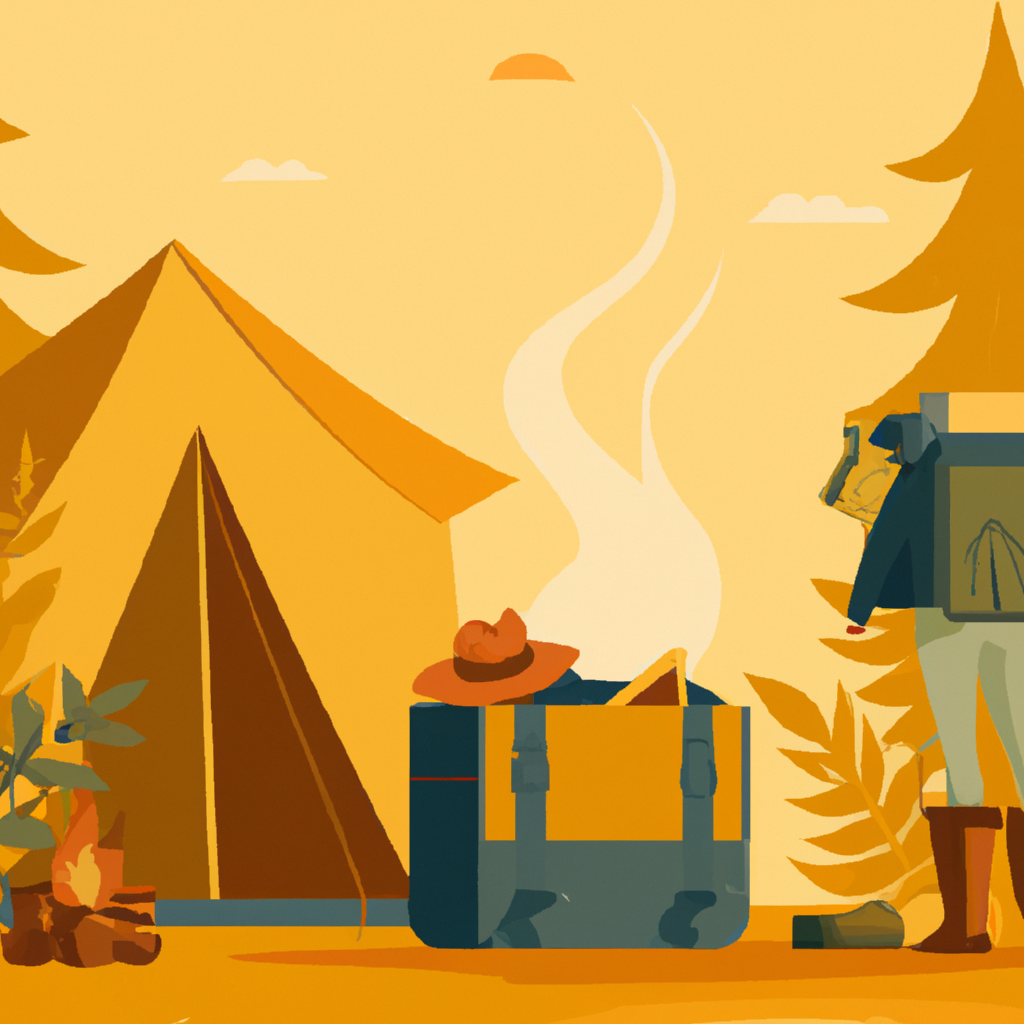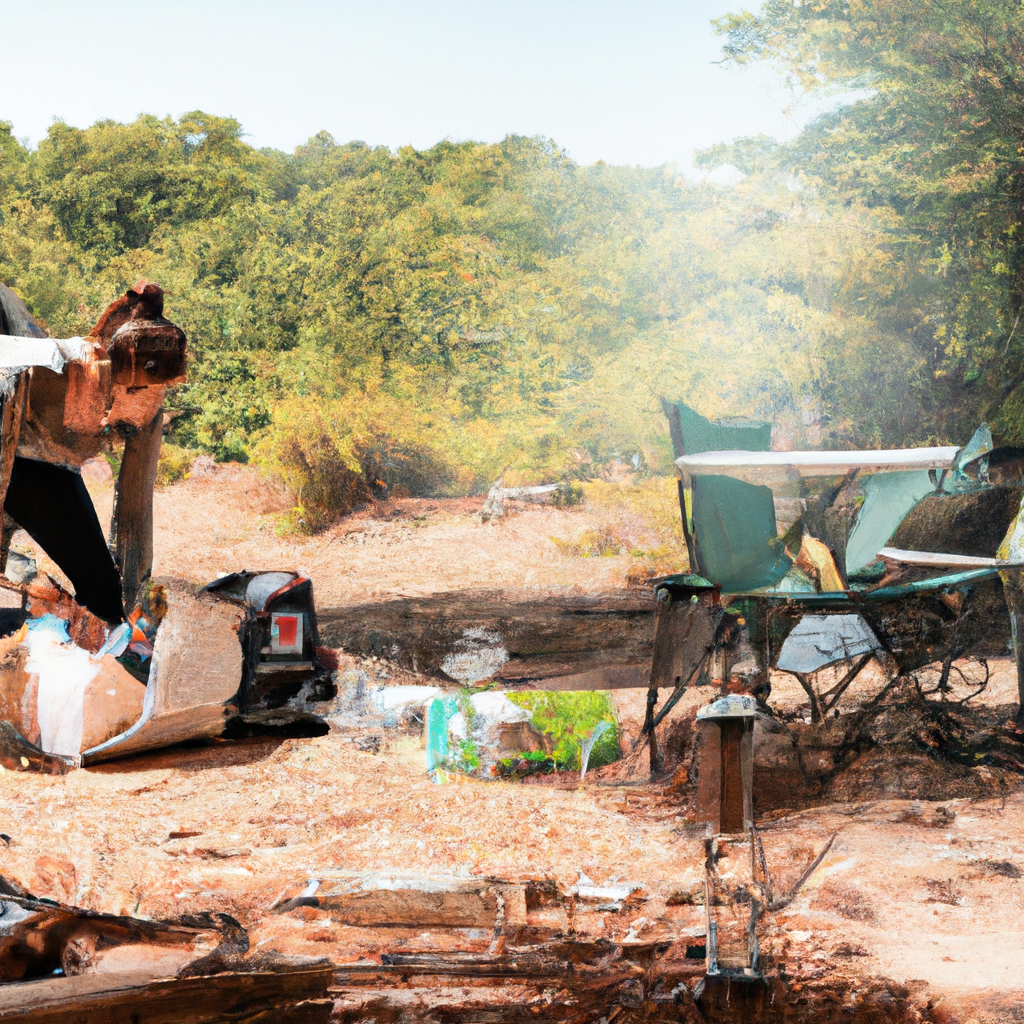So, you’ve enjoyed a fantastic camping trip and now it’s time to pack up and head back home. But wait, what’s the procedure for breaking down and packing up your campsite? Well, fear not! In this article, we’ll walk you through all the essential steps to ensure a smooth and efficient pack-up process. From consolidating and cleaning your gear to properly storing food and disposing of waste, we’ve got you covered. So, grab a cup of coffee and let’s dive into the world of campsite pack-up procedures!

Gathering Necessary Equipment
Before you begin breaking down and packing up your campsite, it’s important to gather all the necessary equipment. By having everything ready, you can streamline the process and ensure that nothing is left behind. Start by creating a checklist of essential camping gear that you will need to pack. This can include items such as tents, sleeping bags, cooking equipment, camp furniture, and personal hygiene items.
Once you have your checklist, gather all the packing supplies you will need. This can include sturdy boxes or storage containers, garbage bags, ziplock bags, and packing tape. These supplies will help you organize and protect your equipment during transport.
Before packing your gear, take some time to organize and clean each item. Check your tent for any tears or damages, and make any necessary repairs. Give your sleeping bags a good shake to remove dirt and debris, and air them out to keep them fresh. Wipe down your camp furniture and cooking equipment to remove any food or grease residue.
Disposing of Waste Properly
When it comes to disposing of waste at your campsite, it’s essential to follow proper procedures to minimize your impact on the environment. Start by properly disposing of trash. Use designated trash bags and ensure they are securely closed to prevent animals from getting into them. When possible, separate recyclables from regular trash. Take your trash bags to designated collection areas or pack them out with you if there are no disposal facilities on-site.
Waste water disposal is another important aspect to consider. If you have a portable camping sink, dispose of waste water in a designated gray water collection area or follow local regulations. Avoid dumping waste water directly into natural water sources as it can harm the environment.
Toilet waste disposal is a sensitive issue that should be handled with care. If you were camping in a designated campground with restroom facilities, use the provided toilets. If you used a portable toilet, follow the manufacturer’s instructions for properly emptying and cleaning it. If there were no facilities available, dig a small hole away from water sources to bury your waste. Remember to pack out toilet paper or use biodegradable options.
Taking Down the Tent
Properly taking down your tent is crucial to ensure it stays in good condition for years to come. Start by removing the tent stakes from the ground. Be careful not to damage the tent fabric or the stakes themselves. Clean off any dirt or debris from the stakes before packing them away.
After removing the stakes, detach the rainfly (if applicable) and tent poles. Gently fold the rainfly and poles, taking care not to bend or break them. Storing them in their respective bags or alongside the tent can help keep everything organized.
Lastly, fold the tent itself. Start by removing any loose dirt or debris on the fabric. Then, collapse the tent in a neat and orderly manner. Be mindful of any zippers or screens and avoid forcing any parts. Ideally, you should use the tent’s original storage bag, but if it doesn’t fit, choose a suitable alternative. Ensure the tent is packed tightly to prevent any damage during transportation.

Cleaning and Packing Sleeping Bags
Cleaning and packing your sleeping bags properly will help maintain their warmth and longevity. Begin by shaking out any dirt or debris from the sleeping bags. You can also use a soft brush or cloth to remove stubborn dirt. Be gentle to avoid damaging the fabric.
Next, roll up the sleeping bags tightly. Start by folding the bag in half lengthwise, and then roll it up tightly from the foot to the head. Avoid rolling too tightly as it can damage the insulation. Finally, store the sleeping bags in a breathable storage bag or sack to prevent mildew or odors from forming.
Breaking Down Camp Furniture
Whether you have collapsible chairs, folding tables, or stools, breaking down your camp furniture is relatively straightforward. Start with collapsing and disassembling any chairs. Follow the manufacturer’s instructions for folding and packing each chair. Some may require you to remove a fabric seat or backrest for easier storage.
When it comes to folding tables and stools, most models have a simple mechanism that allows for easy folding and unfolding. Collapse the table or stool, making sure all parts are securely fastened. Again, refer to the manufacturer’s instructions if needed.
Once your furniture is disassembled, make sure to store it properly. Use the original bags or containers, if available, to protect the pieces during transport. Alternatively, you can wrap them in blankets or secure them with bungee cords to prevent any movement or damage.
Packing Cooking Equipment
Properly cleaning and packing your cooking utensils and dishes after a camping trip will ensure they are ready for your next adventure. Start by cleaning each item thoroughly to remove any food residue. Use hot water and biodegradable soap, if available, to minimize your impact on the environment. Scrub away any stubborn grime and rinse everything thoroughly.
Once clean, allow your cooking utensils and dishes to air dry completely before packing them. Moisture can lead to mold or mildew growth, so take the time to ensure they are fully dry. Pack each item securely in a box or storage container, using padding or dish towels to prevent any movement or breakage.
When it comes to packing your camping stove and fuel, safety is of utmost importance. Ensure the stove is fully cooled down before handling it. Detach any removable parts, such as propane tanks or fuel canisters, and pack them separately to prevent leaks or accidents. Use a sturdy box or bag to transport your stove and fuel safely.
Taking Care of Campfire
Properly extinguishing the campfire is crucial not only for safety but also for preserving the natural landscape. Start by pouring water over the fire, making sure to completely douse the flames and any remaining embers. Stir the ashes and coals with a shovel or stick to ensure everything is wet.
After extinguishing the fire, let the ashes and coals cool down completely. Once cooled, carefully scoop the ashes using a shovel or heat-resistant container. Ensure all traces of the fire, including any burnt wood or debris, are removed from the fire pit area. Disperse the ashes in a designated ash disposal area, away from vegetation and water sources.
Dealing with Food and Cooking Supplies
Properly handling and disposing of food and cooking supplies is essential to prevent wildlife encounters and minimize waste. Start by properly storing any leftover food. If it is still edible and safe to consume, pack it up in airtight containers or ziplock bags to enjoy later. Make sure the containers are securely sealed to prevent any spills or leaks.
When it comes to coolers, giving them a thorough cleaning is crucial. Empty and discard any remaining ice or water, and remove all food residue. Use warm water and biodegradable soap to clean the inside and outside of the cooler. Rinse it thoroughly and let it air dry completely before storing it.
Finally, dispose of any leftover food supplies that are no longer needed or are spoiled. If possible, separate organic waste from non-biodegradable items, such as packaging or cans. Place them in designated garbage bags and dispose of them properly in designated collection areas.
Addressing Water and Hygiene
Water management and personal hygiene are essential aspects of breaking down and packing up a campsite. Start by cleaning and drying all water containers thoroughly. Empty any remaining water and rinse them with clean water. Use warm, soapy water to clean the inside and outside of the containers. Rinse them thoroughly to remove any soap residue and let them air dry completely.
Treating and storing drinking water is important for ensuring your health and well-being. If you collected water from natural sources, such as rivers or lakes, it’s crucial to treat it properly before drinking. Use water treatment methods, such as boiling, filtering, or using water purification tablets, to eliminate any potential contaminants.
Before packing up, make sure to pack your personal hygiene items. This can include items such as toothbrushes, toothpaste, soap, and toilet paper. Ensure they are securely packed to prevent any leaks or spills during transport.
Checking for Forgotten Items
It’s easy to forget small or hidden items when breaking down a campsite, so it’s important to double-check everything before leaving. Start by thoroughly inspecting your campsite. Walk around and check the ground for any small items that may have been dropped or left behind. Look under tables, chairs, and other furniture for any forgotten belongings.
Pay close attention to commonly forgotten areas such as inside tent pockets, beneath sleeping pads, or in the pockets of your clothing. Check any bushes or trees nearby for any items that may have caught on branches.
Ensure that nothing is left behind before leaving your campsite. Take a final sweep of the area and retrace your steps to make sure you haven’t missed anything. Leaving a clean and tidy campsite not only helps preserve the environment but also ensures a positive experience for the next campers.
By following these comprehensive guidelines, you can efficiently and responsibly break down and pack up your campsite. Not only will this help protect the environment, but it will also ensure that your equipment stays in good condition and ready for your next outdoor adventure. Happy camping!

